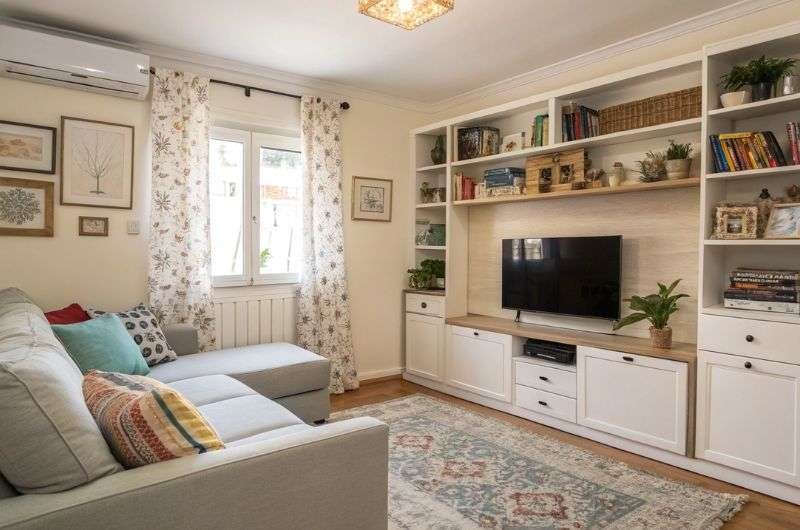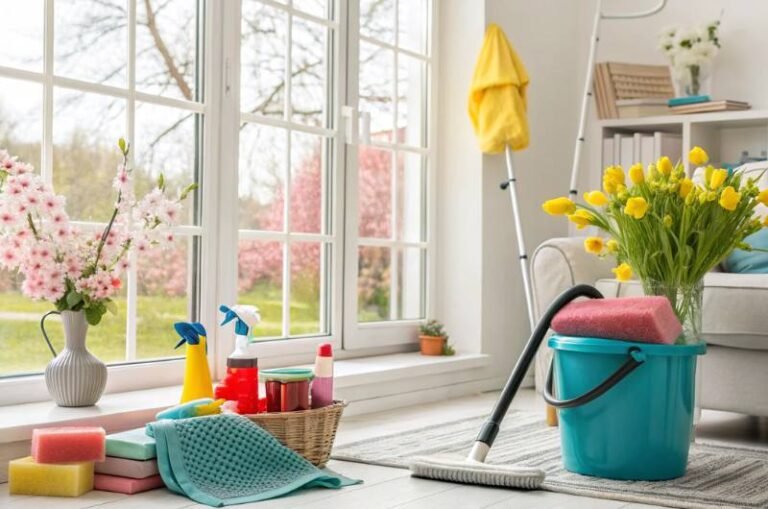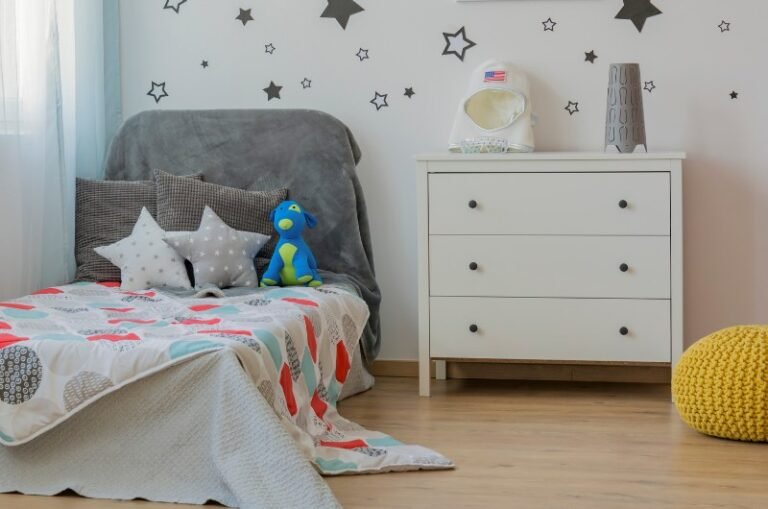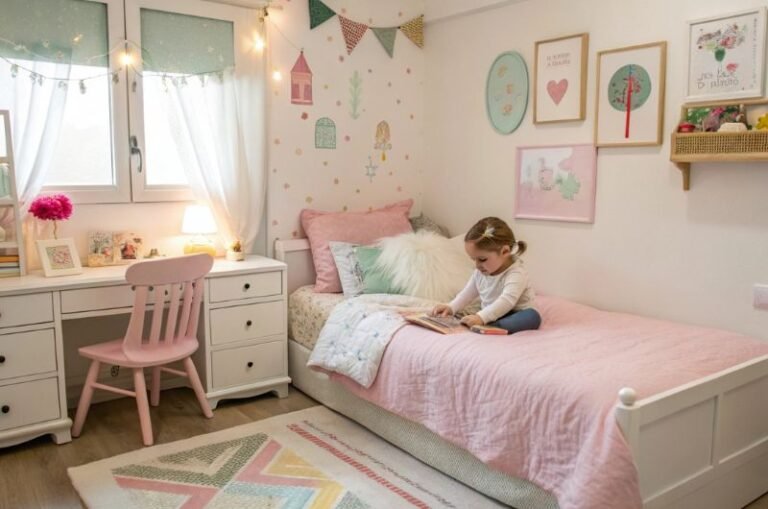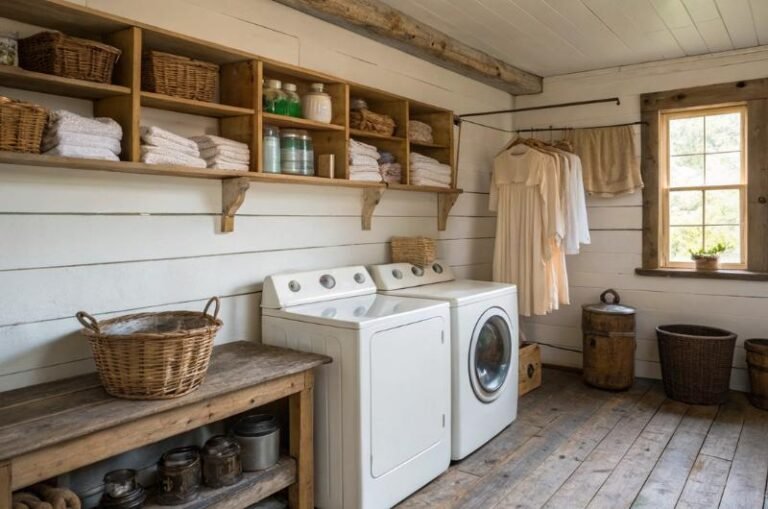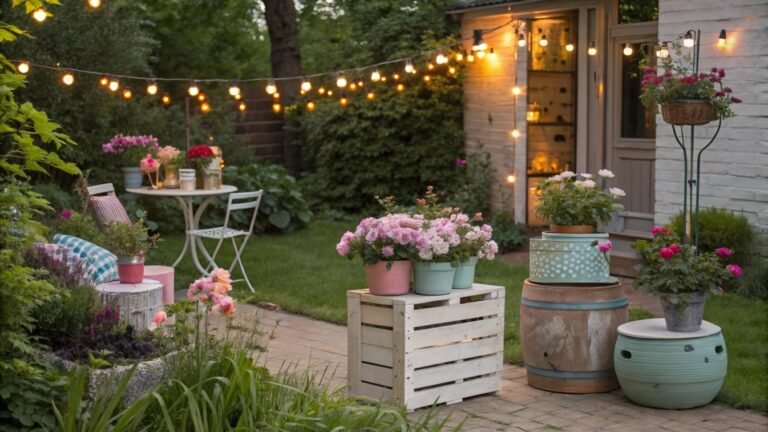14 Small Living Room Decor to Maximize Space
You walk into your living room, and instead of feeling cramped, it feels like a chic little retreat. You have the perfect balance of space and style, where every piece of furniture and decor serves a purpose. Sounds like a dream, right? But with the right tricks, it’s completely possible to maximize your small living room decor. And I’m here to share all the cozy, clever ideas to help you do just that.
If you’ve been scrolling through Pinterest, you know there’s no shortage of small space inspo. But what’s actually going to work for your space? Whether you’ve got an apartment, a studio, or just a cozy little corner in your home, I’ve got you covered. In this article, you’ll find practical steps, simple hacks, and a little bit of magic to make your small living room feel airy, functional, and totally on-trend.
Let’s get into it—grab your coffee, and let’s maximize that space!
What You Might Need:
- Multi-functional furniture (sofa beds, ottomans, etc.)
- Mirrors (to reflect light and create depth)
- Light, neutral paint colors
- Stylish storage solutions (baskets, shelves, etc.)
- Textures (throws, rugs, pillows)
- Vertical storage items (floating shelves, wall hooks)
- Plants (for a fresh, vibrant vibe)
Must Buy Products:
1. Embrace Light, Neutral Colors to Open Up the Space
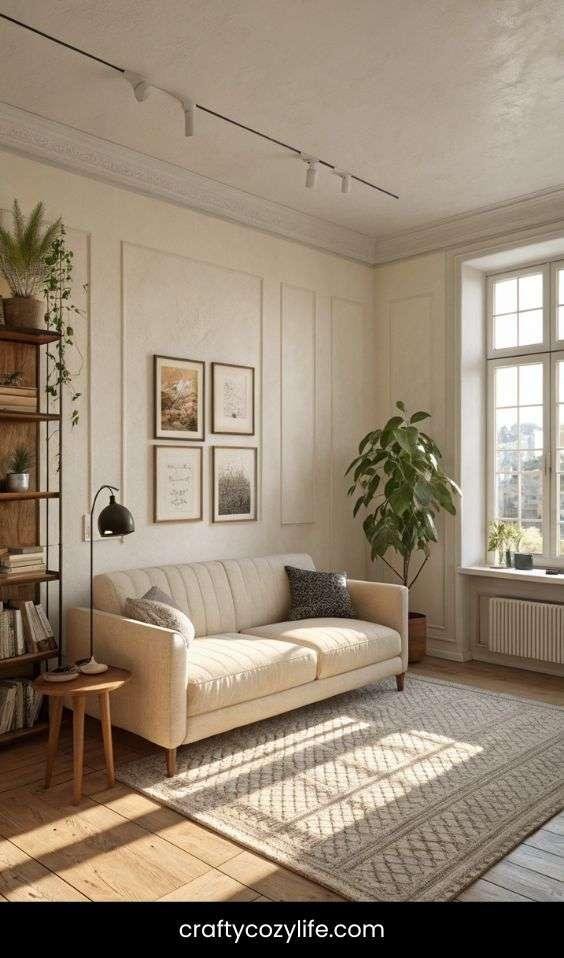
You know how a light, airy breeze makes everything feel more open? Same goes for your walls and furniture. In a small living room, using light, neutral colors can create the illusion of more space. Think soft whites, light grays, or even pale pastel shades. These colors reflect natural light and make your room feel larger than it actually is.
Step-by-Step:
- Start with your walls: Paint them in a soft, light color like white or pale beige.
- Choose furniture in light tones—opt for a beige sofa or light wood coffee tables.
- Use accents (pillows, throws, or curtains) in coordinating soft hues.
- Incorporate pops of color through art or greenery for personality without overwhelming the space.
Picture This: Imagine your living room now—it’s a soft, serene retreat, bathed in natural light. The walls reflect the glow from your window, and the pale-colored sofa makes the room feel expansive. You’ve maximized your small living room decor by giving it space to breathe.
2. Multi-Functional Furniture is Your Best Friend
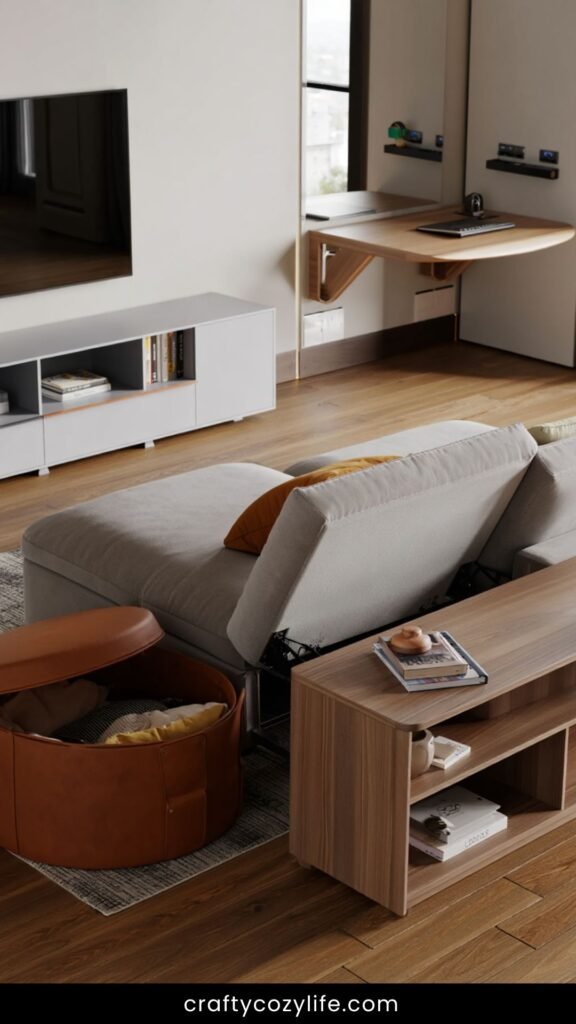
Okay, let’s talk furniture. When you’re working with a small living room, every piece of furniture needs to pull double duty. A sofa that turns into a bed, an ottoman with hidden storage, or a coffee table with shelves underneath—these are the kinds of genius pieces you want.
Step-by-Step:
- Choose a sofa that doubles as a guest bed or has storage underneath.
- Opt for an ottoman with hidden compartments to store blankets, books, or games.
- Use a coffee table with built-in storage or a floating TV stand with shelves.
- Invest in a folding desk or wall-mounted tables for a flexible workspace.
Picture This: Picture yourself lounging on your comfy, compact sofa that transforms into a bed for movie nights or guests. You kick up your feet on the ottoman, which hides away all your cozy blankets. The room feels open, yet every piece is serving a purpose!
- 【Multi functional and space saving design】Easily transition from a comfortable 70 inch wide sofa to a spacious queen siz…
- 【3 in 1 Functional Armrest】 The innovative sofa sleeper features two built-in charging ports (2 USB-A, 1 Type-C), allowi…
- 【Ample & Convenient Hidden Storage】This sleeper segmented sofa cleverly hides a large storage area with 2 armrests, maki…
3. Use Vertical Space for Storage and Style
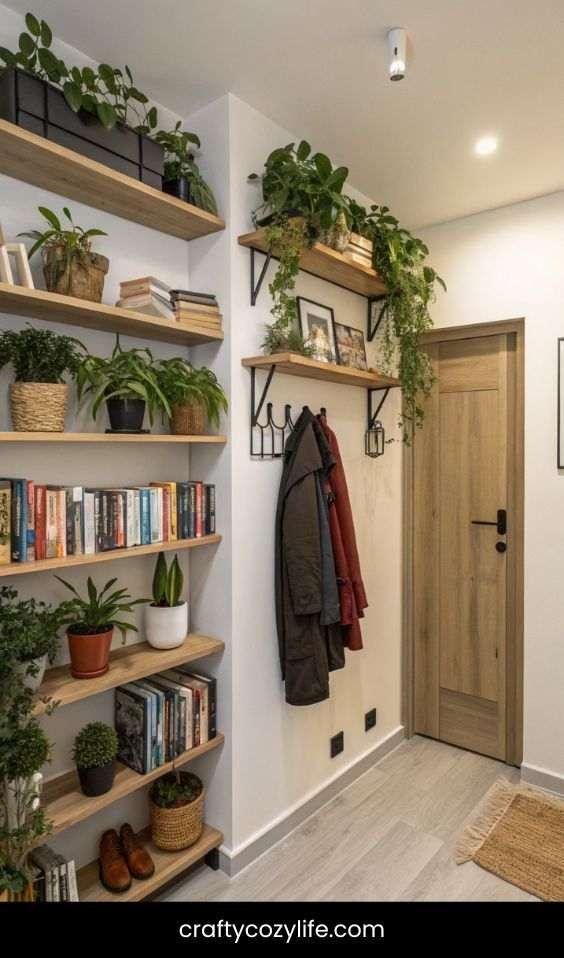
When your floors are limited, look up! Vertical storage is a game changer in small spaces. Floating shelves, tall bookcases, and wall hooks are not only functional but also add an element of design to your space.
Step-by-Step:
- Install floating shelves above your couch or along an empty wall for books, decor, or plants.
- Use tall bookcases to store your favorite reads without taking up floor space.
- Hang wall hooks or racks for extra storage for hats, coats, or bags.
- Consider a tall, narrow cabinet for extra storage without crowding the room.
Picture This: Your walls are lined with floating shelves that display beautiful plants and a few well-chosen books. The tall, sleek bookcase in the corner adds warmth and functionality, and your jackets hang neatly on the hooks by the door—everything in its place and still stylish.
4. Layer Textures to Add Depth and Warmth
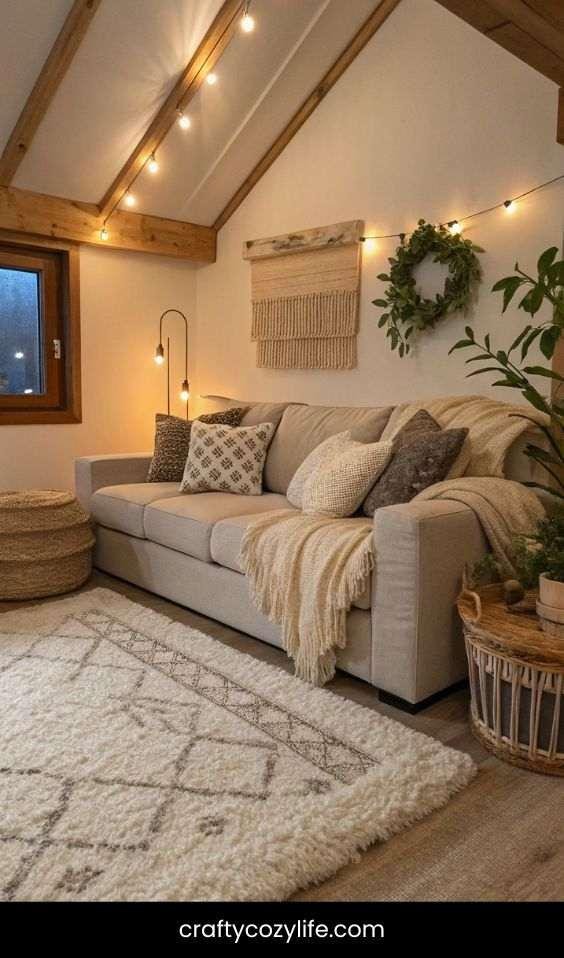
One of the best tricks to make a small room feel cozier and more inviting is by layering textures. Think soft throws, plush pillows, and cozy rugs. These elements not only make your space feel more comfortable but also add depth, which can trick the eye into thinking the space is larger.
Step-by-Step:
- Add a large area rug under your sofa to ground the space and add warmth.
- Layer different textures on your sofa—think soft velvet pillows, chunky knit throws, and a warm fleece blanket.
- Incorporate a textured lamp shade or curtains to bring in more layers.
- Mix and match fabrics like linen, cotton, and wool for visual interest.
Picture This: You walk into your small living room, and the soft, fluffy rug underfoot welcomes you. The sofa is piled high with cozy, inviting pillows in different textures, making it feel like a cozy nest you never want to leave. The warmth and texture in the room make it feel spacious and homey all at once.
5. Bring the Outdoors In with Plants
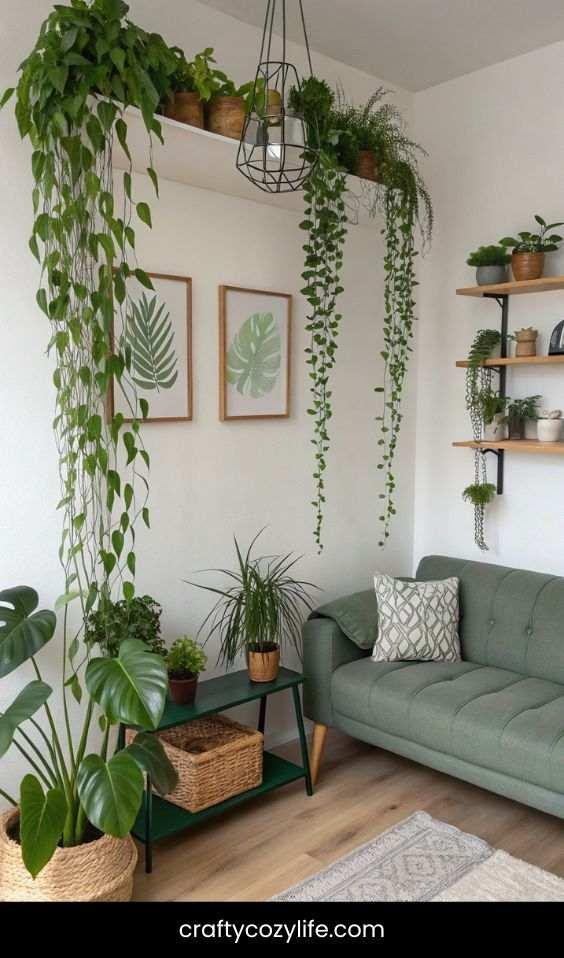
Plants not only brighten up any room, but they also give your space a fresh vibe. A few well-placed plants can instantly liven up your small living room, making it feel more open and natural.
Step-by-Step:
- Add a few small potted plants on your floating shelves or window sills.
- Use a large floor plant like a fiddle leaf fig or snake plant in the corner to fill the space vertically.
- Hang plants from the ceiling with stylish macramé holders to free up floor space.
- Try plants with varying heights and textures to add layers to your decor.
Picture This: Your living room feels fresh and vibrant, with cascading green plants hanging above your sofa. A tall floor plant in the corner adds a pop of nature, and a few small potted plants on your shelves make the space feel alive and inviting.
6. Use Mirrors to Reflect Light and Create the Illusion of Space
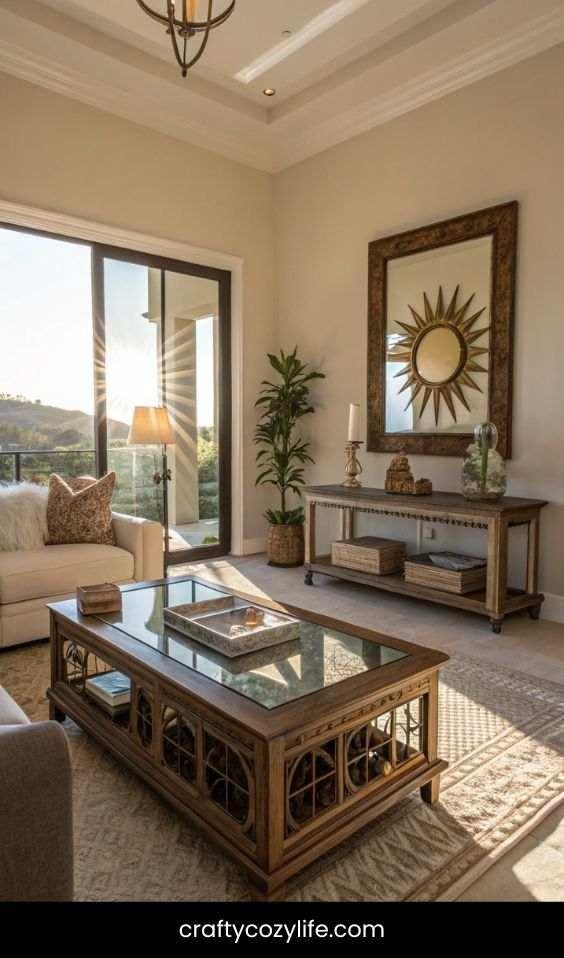
Mirrors are like magic in small spaces. Not only do they brighten up a room by reflecting light, but they also make a space look bigger by creating depth. It’s one of those quick tricks that instantly works wonders.
Step-by-Step:
- Hang a large mirror above the sofa to reflect light and create a sense of spaciousness.
- Use mirrored furniture or accessories, like a coffee table or side table, to add reflective surfaces.
- Arrange smaller mirrors around the room to brighten corners and narrow spaces.
- Consider mirrored frames for your artwork to tie it all together.
Picture This: Your living room is awash in light as the large mirror on the wall reflects the sun’s rays, making the space feel twice as big. The mirrored coffee table glistens softly, adding elegance without crowding the space.
- Mirror Full Length: With its generous dimensions of 76″ x 34″, this full body mirror allows you to effortlessly evaluate…
- Elegant Arched Aluminum Frame: Our floor length mirror is made of high quality aluminum alloy frame. It is lightweight, …
- HD-Imaging & Explosion-Proof Glass: Our upgraded arch mirror is made from 3mm high definition nano glass. What sets it a…
7. Play with Furniture Arrangement to Maximize Flow
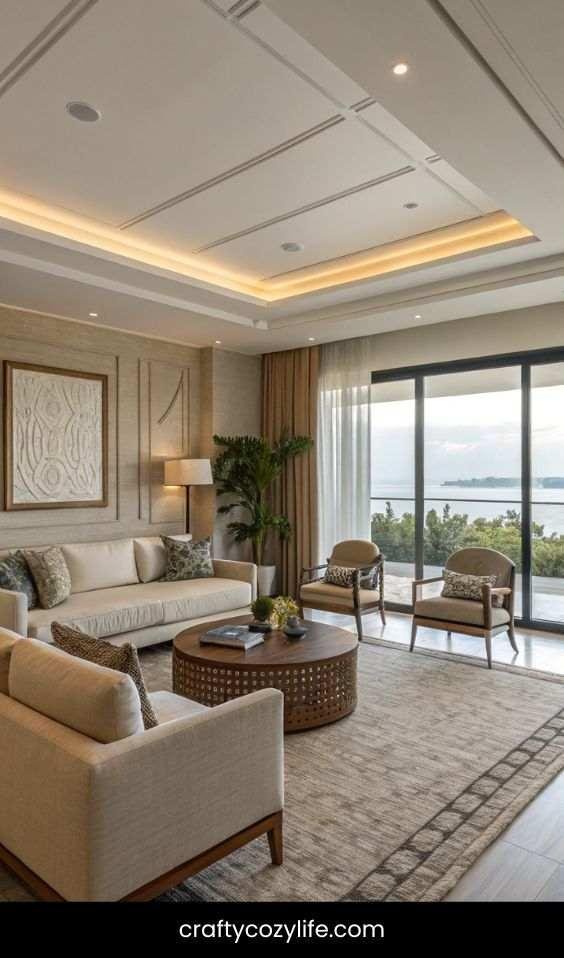
The way your furniture is arranged can have a big impact on how spacious your living room feels. Keep the layout open and airy by allowing pathways and avoiding overcrowded corners.
Step-by-Step:
- Keep the furniture away from the walls to create the illusion of more space in the middle.
- Use a circular rug to help define the seating area while keeping things open.
- Arrange seating so that it faces each other, encouraging conversation and making the space feel cozy.
- Consider an asymmetrical layout to break up the space in a visually interesting way.
Picture This: You walk into your room, and immediately, everything feels more open. There’s a fluid path around the furniture, and the layout invites easy conversation without feeling cramped. Your small space suddenly feels like a grand living area.
8. Choose the Right Size Furniture for Your Room
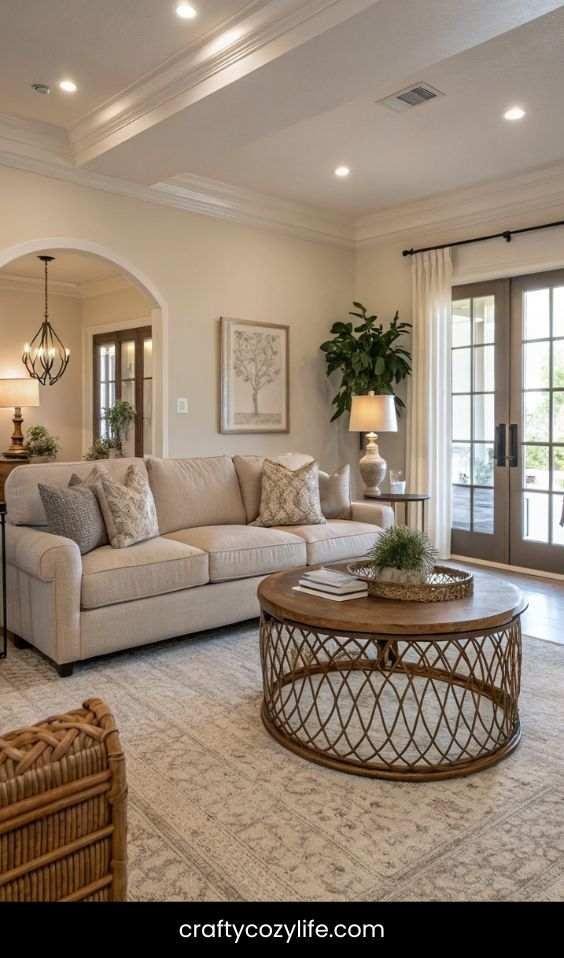
It’s tempting to go for big, bold pieces, but in a small space, you want to be sure your furniture fits the room. The right-sized furniture will create a harmonious balance, making the space feel open without feeling overstuffed.
Step-by-Step:
- Measure your living room before shopping for furniture to make sure it fits.
- Opt for a loveseat instead of a full-sized sofa if you’re short on space.
- Go for a coffee table that’s the same height as your sofa cushions for better flow.
- Look for slim or low-profile furniture pieces to maximize visual space.
Picture This: The sofa you chose fits perfectly in your living room, leaving ample space for traffic to flow freely. You have a stylish, scaled-down coffee table in the middle, and everything feels balanced and breezy.
9. Opt for Floating Furniture to Free Up Floor Space
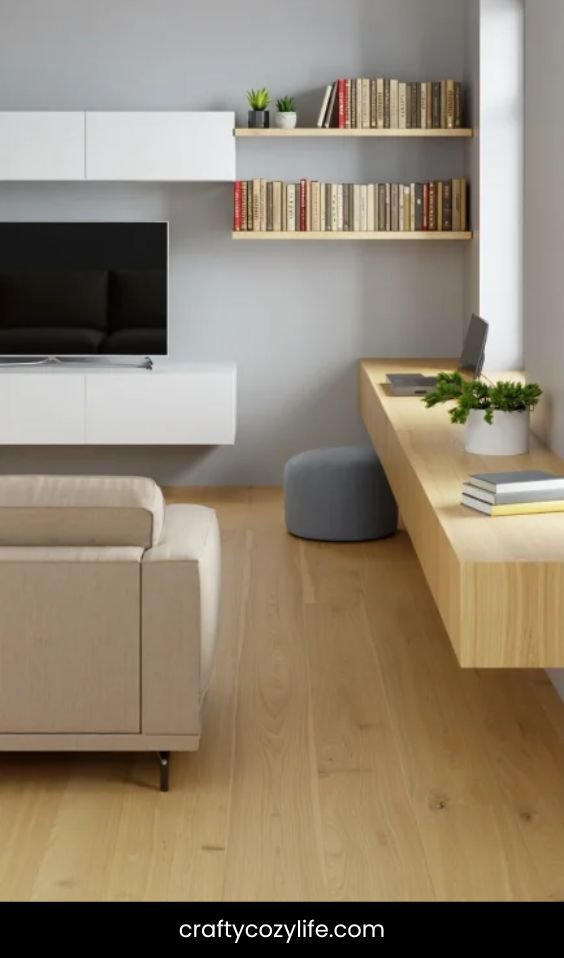
Float your furniture! This is especially great for smaller spaces, as it prevents the room from feeling too heavy or congested by leaving more visible floor space.
Step-by-Step:
- Install floating shelves above your sofa or along a wall for storage and style.
- Choose a floating desk or wall-mounted console to maximize your floor area.
- Opt for a floating TV stand to keep the visual space open.
- Use an ottoman or pouf for additional seating without taking up too much space.
Picture This: The furniture seems to hover in the air, giving the room a sense of openness. The floating shelves hold your books and plants, while the floor beneath feels free and uncluttered.
- 【Space Saving& Large Capacity】Our modern floating tv shelf has large storage. The design of the wall-mounted tv cabinet …
- 【Easy to Assemble & Put Together】Our floating tv shelves can be easily installed using the included hardware, tools and …
- 【Waterproof & Durable】Made of solid plywood board with no fade smooth finish which make the floating media stand waterpr…
10. Maximize Wall Space with Vertical Storage Solutions
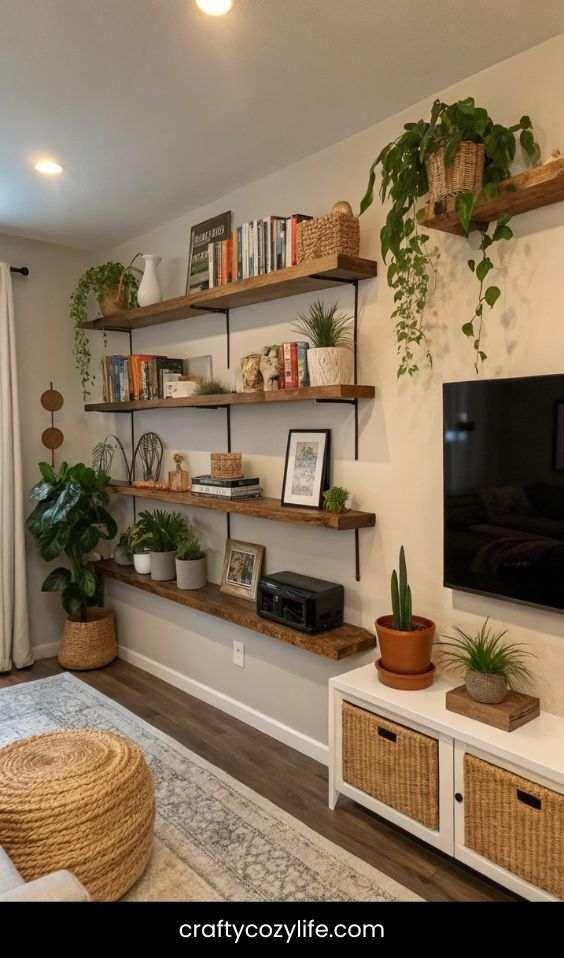
When your living room is small, it’s important to use every inch of vertical space. Wall-mounted storage helps free up floor space while keeping your things organized.
Step-by-Step:
- Install wall-mounted shelves above the TV or near the door to hold essentials.
- Use floating wall units for books, decor, or plants.
- Hang a pegboard for easy access to items like keys, hats, or scarves.
- Consider a wall-mounted desk to save space and create a multifunctional area.
Picture This: The walls of your living room are lined with neat, floating shelves that hold your favorite books, decor, and greenery. Every item is stored neatly and accessibly, leaving more room to move around.
11. Incorporate Transparent Furniture for a Minimalist Look
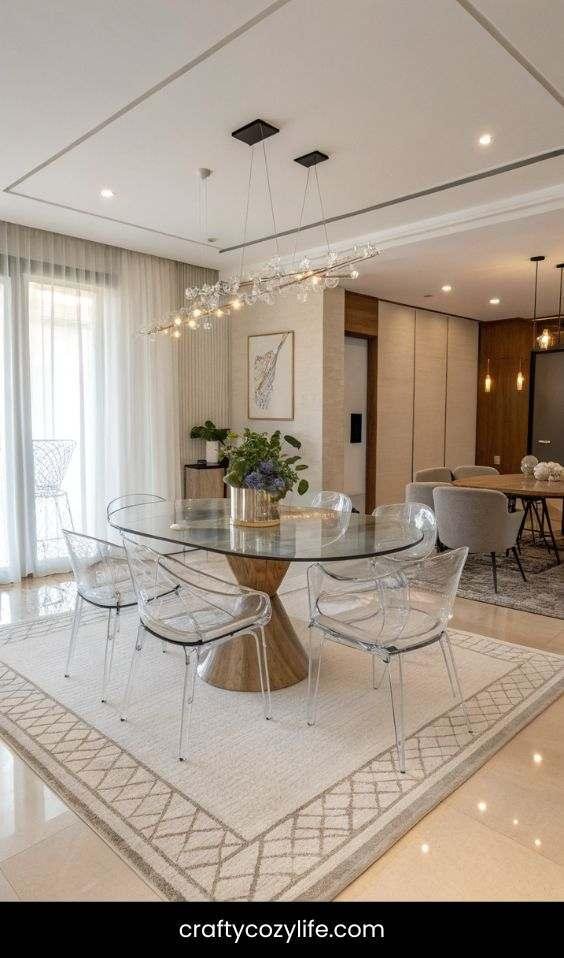
See-through furniture is perfect for small spaces because it visually disappears, making your room feel less cluttered while still offering the functionality you need.
Step-by-Step:
- Add an acrylic coffee table or side table to your living room for a sleek, minimalist look.
- Choose clear chairs or stools for extra seating that won’t crowd the room.
- Use glass shelving or a glass-top desk to create a modern, airy vibe.
- Opt for a transparent lamp base to keep things feeling light and open.
Picture This: Your coffee table appears to float in the center of the room, its transparent material creating a clean, open feel. The clear chairs around your dining table seem to disappear into the room, making it look spacious and stylish.
12. Layer Lighting for a Cozy, Inviting Atmosphere
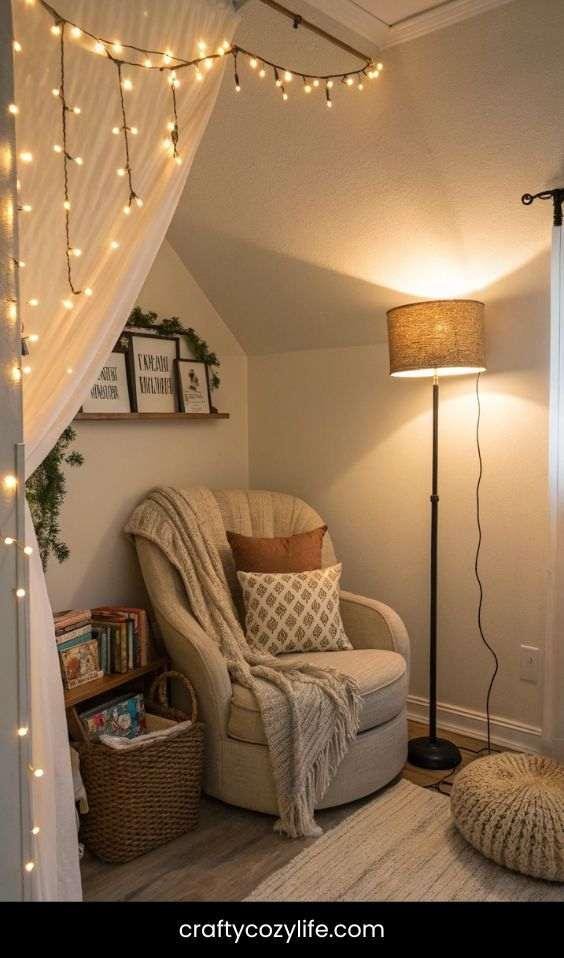
Layering lighting in a small room can help set the mood and brighten the space without making it feel cluttered. Consider a mix of ambient, task, and accent lighting.
Step-by-Step:
- Install recessed lighting or track lighting on the ceiling to provide overall illumination.
- Use floor lamps or table lamps for soft, ambient lighting in seating areas.
- Add string lights or fairy lights around the room for a cozy, magical vibe.
- Incorporate dimmers to adjust the lighting depending on the mood.
Picture This: The soft glow of overhead lights bounces off your light-colored walls, while a cozy floor lamp adds warmth by your reading nook. The string lights twinkle softly, giving the room an inviting, almost dreamlike feel.
13. Keep Decor Simple and Intentional
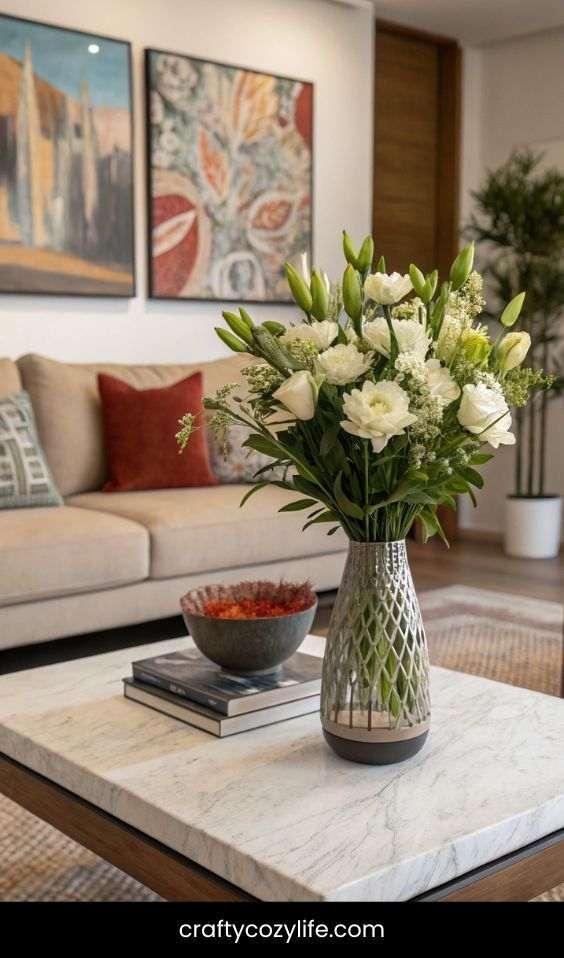
In a small living room, less is more. Stick to a few carefully chosen decor pieces that bring personality without overwhelming the space.
Step-by-Step:
- Choose a few statement decor pieces like a large art print or a bold vase.
- Limit knick-knacks to a few well-placed items that add character.
- Use decor that serves a dual purpose, like decorative trays that can hold remotes or candles.
- Keep countertops or tables clear for a clean, uncluttered look.
Picture This: Your coffee table holds a single, beautiful vase with fresh flowers. The wall art is bold but not overcrowding, and everything feels intentional. The space looks curated and effortlessly chic.
14. Use a Statement Rug to Define the Space
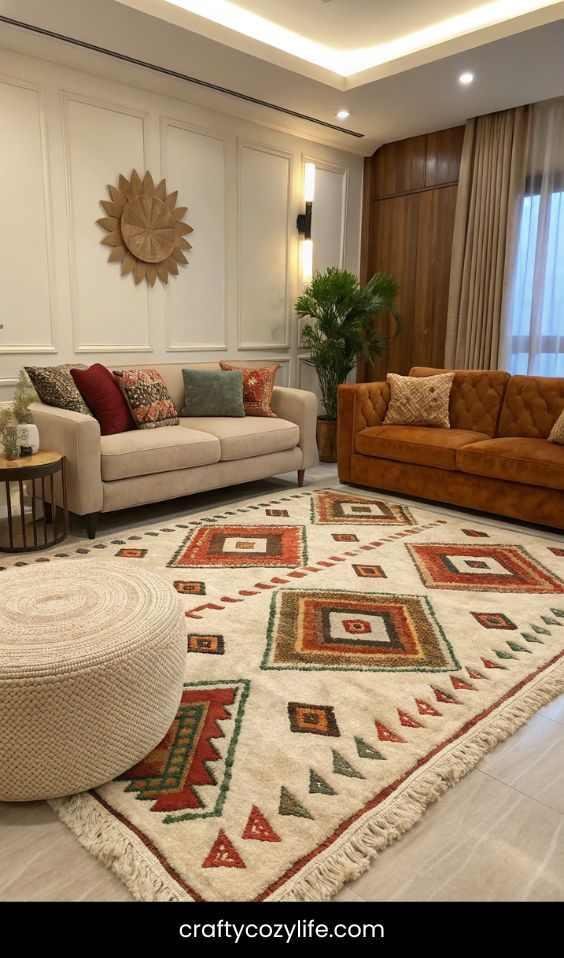
Rugs aren’t just for warmth—they can also define different zones within a small living room, especially if your space is part of a larger open-plan area.
Step-by-Step:
- Use a large rug to define the seating area in your living room.
- Consider a patterned rug to add interest or a neutral rug to complement the space.
- Layer smaller rugs on top of a large rug to create contrast and warmth.
- Make sure the rug fits well with the furniture, allowing all legs of the sofa to sit on it.
Picture This: Your rug anchors the seating area, the soft, plush texture beneath your feet giving the space a warm and inviting vibe. The rug’s pattern adds a pop of personality, and everything feels perfectly placed.
FAQs
Q1: How do I make my small living room feel bigger?
A1: The key to making a small living room feel bigger is using light colors, mirrors, and multi-functional furniture. Keep the layout open and airy, and utilize vertical space with shelves or wall-mounted storage. Also, try to avoid overcrowding the room with too many large pieces—opt for furniture that’s scaled to your space.
Q2: Can I use dark colors in a small living room?
A2: Yes! While light colors generally make a space feel larger, dark colors can add coziness and warmth. If you love deep hues, try using them on accent walls, or pair them with lighter furniture and plenty of mirrors to balance the space. The key is moderation!
Q3: What furniture is best for a small living room?
A3: In small spaces, look for pieces that are compact and multi-functional. Think sofas with storage, fold-out desks, or coffee tables with hidden compartments. Furniture with exposed legs also helps keep the room feeling light and airy by allowing more floor space to show.
Q4: How can I add storage without taking up floor space?
A4: Vertical storage is your friend! Wall-mounted shelves, floating cabinets, and tall bookcases are all great ways to store items while keeping the floor clear. You can also use ottomans and sofas with built-in storage to maximize every inch of space.
Q5: What type of lighting is best for small spaces?
A5: Layered lighting works wonders in small rooms. A combination of ambient (overhead), task (reading lamps), and accent (decorative lighting) helps create a warm, inviting atmosphere without crowding the room. Use dimmers to adjust lighting based on the mood!
Q6: Should I use a rug in my small living room?
A6: Absolutely! A rug can help define areas within your living room and add warmth and texture. Just make sure it’s sized appropriately—not too small that it gets lost, but not too large that it overwhelms the space. A well-chosen rug can actually make the room feel more spacious.
Q7: Can I use large furniture in a small living room?
A7: It depends! If you have larger furniture pieces you love, try opting for one or two and balance them with smaller accessories. For example, you could have a larger sofa but balance it out with a slim coffee table and side tables. Keep the layout open to allow for flow.
Q8: How do I make my living room feel cozy without it feeling cramped?
A8: Layering textures is a great way to add coziness without crowding your space. Use soft throws, pillows, and rugs to create a welcoming atmosphere. Also, keep decor simple and intentional—choose a few statement pieces that reflect your style without overwhelming the room.
Q9: What’s the best way to arrange furniture in a small living room?
A9: Arrange furniture to maximize flow and create conversation areas. Avoid pushing all the furniture against the walls—keeping pieces closer to the center can open up the space. Also, make sure you have clear walking paths between seating areas to avoid a cramped feel.
Q10: Can plants help in a small living room?
A10: Yes! Plants are a wonderful way to bring life and freshness into a small living room. Choose a few small potted plants or one large statement plant. Don’t forget to use vertical space by hanging plants or placing them on shelves to save floor space.
Closing Thoughts
Now that you’ve got all these tips and tricks at your fingertips, it’s time to start transforming your small living room into a space that’s not only functional but also filled with personality and charm. Maximizing your decor isn’t about squeezing more things in; it’s about making every inch work for you—whether it’s through smart furniture choices, clever storage solutions, or a thoughtful layout.
Remember, it’s all about balance. By embracing light colors, multi-functional pieces, and layers of texture, your small space can feel open, cozy, and totally you. And with a little creativity, you can create a living room that looks like it’s straight out of your favorite Pinterest board—no matter how big or small.
So grab that coffee, put on some tunes, and start making your small living room feel big on style, comfort, and charm. You’ve got this!
